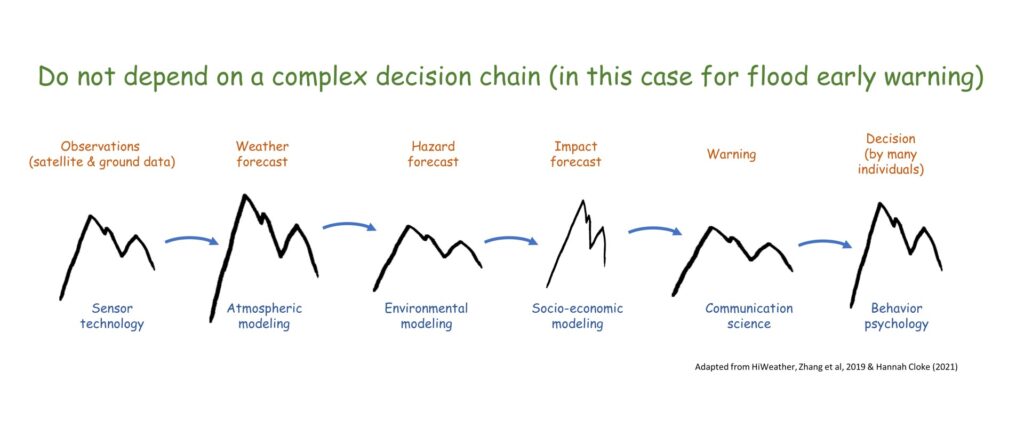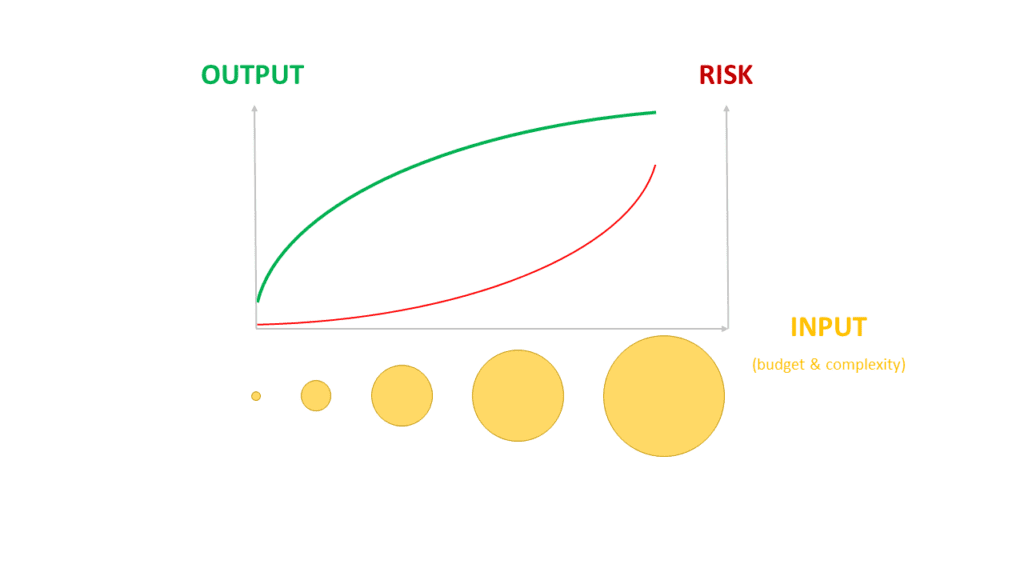A common response when facing water scarcity is to initiate efforts to optimize water use. This seems an entirely common-sense thing to do. Afterall, why squander scarce resources when you do not have enough?
Optimization aims to increase efficiency and total system output while minimizing the duration and frequency of system failure or under-performance. It is a reasonable proposition if the consequences of failure are manageable, or if mechanisms (or funds) are in place to accommodate incidental (general) system failure. However, if you do not have these mechanisms—and cannot provide alternative livelihoods or compensate for all loses—optimization is a dangerous strategy.
Many people in large parts of the world remain intimately dependent on the natural resource base for their livelihood. For them ‘system failure’ spells destitution and can have severe, often long-lasting consequences. Moreover, the people most impacted by these ‘failures’ are often the most vulnerable members of society.
Hence what matters most in these circumstances is to avoid catastrophe: large-scale generalized crop loss because of drought, loss of property or life as a result of a flood, or irreversible loss of biodiversity or riparian ecosystems when the river runs dry.
In an overly optimized system, every disturbance can become a crisis and can therefore lead to catastrophe. Disturbances can be internal—for instance a random management mistake—or external. Maybe most worrying is climate change. Its impacts are probably non-linear and felt mostly at the extremes. This type of disturbance usually compounds and quickly spirals out of control.
Today’s climate is probably milder and more benign than what we will get in a few decades
Do optimized systems lead to conflict?
At some point during a drought a decision must be made who gets water, and who does not. The consequences for those who miss out are probably severe: total crop loss or dying animals. It does not require much imagination to envision how an optimized system—where every disturbance leads to a water shortage somewhere—increases the risk of conflict.
These risks are higher for large river basins—probably transboundary in nature—where optimization has created ‘zero sum’ relations between individual system elements (for instance irrigation schemes or other water users) that are made up of communities that have little to do with each other apart from the shared river. Zero-sum implies that solving a water deficit in one place creates a shortage in another. ‘They are taking your water’ is a potent rallying cry for those who are looking for ways to pursue their own agenda. Optimization in this context is bound to strain intra-basin relations.
Resilience through increasing optionality
Optionality is at the basis of resilience
It points to a very different strategy for water resources management: always maintain some slack and create options through redundancies that ‘waste’ some water in good years but avoid the occasional catastrophic event.
In a nutshell, it is all about reducing the likelihood that shortages will happen by creating storage capacity and not allocating all available water. The more storage, the better—preferably in a distributed set of small and medium-scale reservoirs, groundwater, or soil moisture. Even inefficiencies represent some level or redundancy. Moreover, this setup does not necessarily reduce total system output. Reservoirs can be gradually filled over many years while general water security will encourage farmers to invest in higher yielding varieties and agro-inputs. In addition, a big bonus is that this approach reduces complexity and therefore requires far less managerial capacity.
The main problem of this setup is that it will encounter resistance in normal and wet years, when nothing unusual happens and water resources appear plentiful. Playing the long game is not appreciated by accountants and some politicians (those with a short-term perspective). Nevertheless, it is probably more cost-effective in the long term as it creates a robust and resilient system that can withstand occasional extreme (climate) events without generalized catastrophe of conflict.
By the way: nature does not optimize. In fact, it strives for redundancies (from Nassim Taleb).
A few water-security heuristics (time-tested)
- Do not optimize; rather, create redundancies
- Do not live in the floodplain
- Do not depend on complex decision chains
- Avoid centralized decision making
- Do not create a system with a single point of failure
- Do not depend on a single large infrastructure element; rather, implement many small interventions that are inter-connected (see above)
- Do not try to predict extreme events; rather, focus on what you will do if they happen
- Store as much water as possible
- Address identified water resources issues by a combination of measures, rather than by a single measure only
- Create beneficial assemblies in which each intervention strengthens the functionality of another
- Avoid cost-benefit analysis; rather go for durable solutions that require least maintenance
- Reduce maintenance and operation costs to the bare minimum (see above)
All in the spirit of “Primum Non Nocere” (first do no harm)

Managing an optimized system requires lots of resources
This topic was discussed in a previous blog post: “First Do No Harm”: Pragmatic Water Resources Management
An optimized system is more complex and requires more: data & information, hierarchy, decisions, communication, agreement, collaboration, centralization, rules & regulations, specialists, etc. Furthermore, an optimized system requires more physical infrastructure.
However, the marginal increase in output tends to decrease at some point while the associated risks and required inputs—in terms of budget, skilled people, management & information systems—go up exponentially. This is depicted in the below figure.

Hence the critical questions are:
- Are you sure that you can muster the required resources to sustain this optimized system, at all times?
- Do you have the funds and mechanism to deal with generalized system collapse?
If not, it is better not to optimize and forfeit some potential output but have a robust and resilience system that does not lead to generalized collapse because of an unexpected disturbance. You will sleep better.
Note: the image in the righthand panel visualizes the changes in global temperature as measured over the past 100+ years. Each stripe represents the average global temperature for a specific year. Blue represents below-average values while red represents above-average values.
The stripes have been prepared by Ed Hawkins, National Centre for Atmospheric Science, University of Reading (https://showyourstripes.info)
